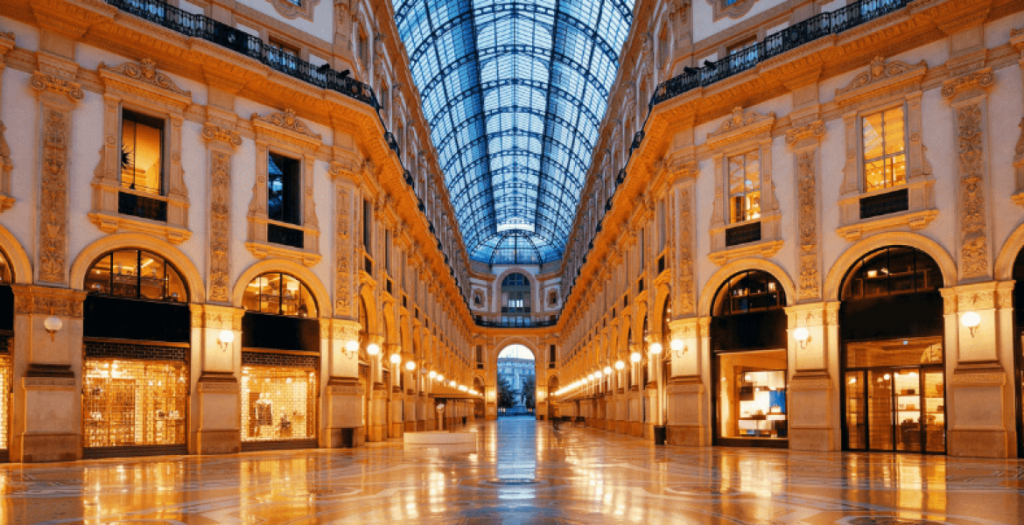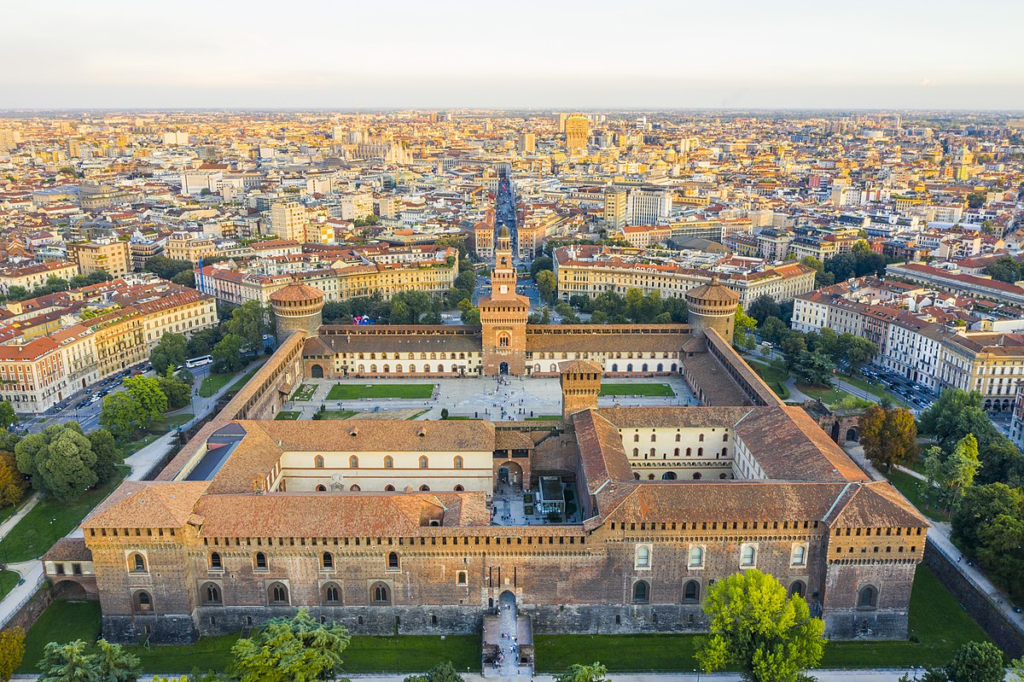Milan, Italy’s fashion and design capital, is a city that effortlessly blends history, culture, and modernity. From its breathtaking architecture to its world-renowned art, Milan offers an array of experiences that cater to every type of traveler. Whether you’re a history buff, an art lover, or simply looking to soak in the vibrant atmosphere of an iconic Italian city, Milan has something special in store for you. In this article, we’ll take you through the top 5 must-visit places in Milan, offering detailed insights, travel tips, and everything you need to make your visit unforgettable.
1. The Duomo di Milano: A Gothic Masterpiece

No visit to Milan would be complete without a stop at the Duomo di Milano, one of the most famous and striking cathedrals in the world. This Gothic masterpiece, which took nearly six centuries to complete, stands as a testament to Milan’s rich history and architectural prowess.
The Architecture and Art
The Duomo’s exterior is a sight to behold, with its intricate spires, statues, and gargoyles that adorn the facade. The cathedral is made from Candoglia marble, giving it a unique pinkish hue that changes with the light. The interior is equally awe-inspiring, featuring soaring ceilings, massive stained glass windows, and an impressive collection of artwork. The altar, with its golden statue of the Virgin Mary, known as the Madonnina, is a focal point that draws the eyes of all who enter.
The Rooftop Experience
One of the highlights of visiting the Duomo is the opportunity to explore its rooftop. Visitors can either climb the 250 steps or take an elevator to the top, where they’ll be rewarded with panoramic views of Milan’s skyline. The rooftop is a labyrinth of spires and statues, and walking among them is like stepping into a different world. On a clear day, you can even see the distant Alps from here.
Travel Tips
- Timing: To avoid long lines, it’s best to visit the Duomo early in the morning or later in the afternoon.
- Dress Code: Keep in mind that the Duomo is a place of worship, so visitors are expected to dress modestly—no bare shoulders or short shorts.
- Tickets: Consider purchasing a combo ticket that includes access to the rooftop, the museum, and the archaeological area beneath the cathedral.
2. Galleria Vittorio Emanuele II: The World’s Oldest Shopping Mall

Located just a stone’s throw from the Duomo, the Galleria Vittorio Emanuele II is not just a shopping mall; it’s a historic landmark and a symbol of Milan’s elegance and style. This stunning 19th-century arcade, often referred to as “Milan’s living room,” is a place where fashion, architecture, and history converge.
Architectural Splendor
The Galleria is an architectural marvel, with its glass and iron dome, mosaic floors, and intricately decorated facades. The central octagonal space under the dome is particularly impressive, featuring mosaics representing the continents. The grand entranceways, lined with luxury boutiques and cafes, add to the Galleria’s opulent atmosphere.
Shopping and Dining
The Galleria is home to some of the world’s most prestigious brands, including Prada, Louis Vuitton, and Gucci. Even if shopping isn’t on your agenda, simply walking through the Galleria and window shopping is an experience in itself. The Galleria also houses some of Milan’s oldest cafes and restaurants, where you can sit back with a coffee or aperitivo and watch the world go by.
The Bull of Turin
One of the Galleria’s quirkiest traditions is the mosaic of a bull on the floor. Legend has it that spinning three times on the bull’s testicles brings good luck. It’s a tradition that many tourists and locals alike partake in, making it one of the Galleria’s most photographed spots.
Travel Tips
- Best Time to Visit: The Galleria can get crowded, especially during the peak shopping hours. For a quieter experience, visit early in the morning or later in the evening.
- Dining: If you’re planning to dine here, be prepared for premium prices, but the experience is worth it for the atmosphere alone.
- Photography: Don’t forget to bring your camera. The Galleria is one of the most Instagram-worthy spots in Milan.
3. The Last Supper (Il Cenacolo): Leonardo da Vinci’s Masterpiece

Leonardo da Vinci’s “The Last Supper” is one of the most iconic and studied works of art in the world, and seeing it in person is a once-in-a-lifetime experience. Housed in the refectory of the Convent of Santa Maria delle Grazie, this masterpiece is a must-see for anyone visiting Milan.
The History and Significance
Painted between 1495 and 1498, “The Last Supper” depicts the moment Jesus announces that one of his disciples will betray him. The composition, emotion, and detail captured in this fresco are unparalleled, and it has been the subject of endless analysis and interpretation. Over the centuries, the painting has suffered damage due to environmental factors, but it has been carefully restored to preserve its magnificence.
The Viewing Experience
Due to its fragile state, access to “The Last Supper” is highly controlled. Visitors are allowed in small groups for 15-minute viewing slots to minimize exposure to humidity and light. This limited access makes the experience even more special, as you can take in the painting’s details without the distraction of large crowds.
Travel Tips
- Booking in Advance: Tickets to see “The Last Supper” sell out months in advance, so it’s crucial to book as early as possible. Online booking is recommended.
- Timing: Arrive at least 15 minutes before your scheduled time. Late arrivals may not be accommodated.
- Guided Tours: Consider booking a guided tour that includes a visit to “The Last Supper.” The additional context provided by a knowledgeable guide can greatly enhance your experience.
4. Sforza Castle (Castello Sforzesco): A Fortress of Art and History

Sforza Castle is a massive fortress that stands as a symbol of Milan’s storied past. Built in the 15th century by Francesco Sforza, Duke of Milan, this imposing structure has been a witness to centuries of Milanese history. Today, it houses several museums and art collections, making it a cultural hub for the city.
The Castle’s History
The castle has seen various transformations over the centuries, from a military fortress to a ducal residence and later, a symbol of Milan’s power and prestige. Its red brick walls, massive towers, and impressive courtyards evoke the grandeur of the Renaissance era. Visitors can explore the castle’s extensive grounds, which include beautiful gardens and fountains.
Museums and Art Collections
Inside the castle, you’ll find a treasure trove of art and historical artifacts. The museums cover a wide range of interests, from ancient art and archaeology to musical instruments and modern art. The Pinacoteca del Castello Sforzesco is particularly noteworthy, housing works by artists such as Michelangelo, including his last unfinished sculpture, the Rondanini Pietà.
The Sempione Park
Adjacent to Sforza Castle is the expansive Sempione Park, a green oasis in the heart of Milan. The park is perfect for a leisurely stroll or a picnic, offering beautiful views of the castle and a tranquil escape from the bustling city.
Travel Tips
- Museum Pass: If you’re planning to visit multiple museums within the castle, consider purchasing a museum pass for better value.
- Timing: The castle is less crowded in the early morning or late afternoon. Allocate a few hours to fully explore both the castle and the park.
- Events: Keep an eye out for special exhibitions and events held at the castle, which can provide a unique experience during your visit.
5. Brera District: The Artistic Heart of Milan

The Brera district is where Milan’s artistic soul truly shines. This charming neighborhood is a blend of old-world charm, bohemian vibes, and contemporary style. From its narrow cobblestone streets to its vibrant art scene, Brera is a place that invites exploration and creativity.
Brera Art Gallery (Pinacoteca di Brera)
The highlight of the district is undoubtedly the Brera Art Gallery, one of Italy’s most important art museums. The gallery boasts an impressive collection of Italian Renaissance masterpieces, including works by Raphael, Caravaggio, and Titian. The gallery itself is housed in a historic building that was once a monastery, adding to the sense of history and culture that permeates the area.
Cafés and Boutiques
Brera is also known for its array of cozy cafés, artisan shops, and boutique stores. Whether you’re looking for a unique piece of jewelry, handmade crafts, or a perfect spot for an espresso, Brera has something to offer. The atmosphere is relaxed and inviting, making it an ideal place to spend an afternoon.
Cultural Vibes
Beyond the art gallery, Brera is a district where creativity flourishes. You’ll find street artists, small galleries, and cultural events that showcase the best of Milan’s artistic talent. The area is particularly lively in the evening, with locals and visitors enjoying aperitivos at outdoor terraces.
Travel Tips
- Best Time to Visit: Brera is particularly charming in the late afternoon when the light softens, and the streets come alive with activity.
- Dining: Explore the local trattorias for authentic Milanese cuisine. Brera offers a mix of traditional and contemporary dining options.
- Shopping: Take your time exploring the boutique stores. Brera is the perfect place to find unique souvenirs and gifts.
Read more Top 10 Most Visited Cities in Italy



